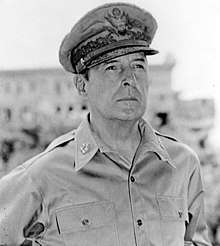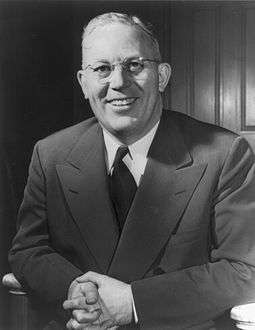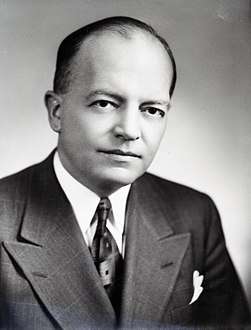1944 Republican Party presidential primaries
The 1944 Republican presidential primaries were the selection process by which voters of the Republican Party chose its nominee for President of the United States in the 1944 U.S. presidential election. The nominee was selected through a series of primary elections and caucuses culminating in the 1944 Republican National Convention held from June 26 to June 28, 1944, in Chicago, Illinois.[1]
| |||||||||||||||||||||||||||||||||||||||||||||||
| |||||||||||||||||||||||||||||||||||||||||||||||
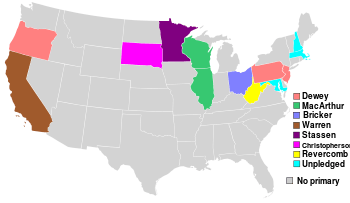 Results map by state. | |||||||||||||||||||||||||||||||||||||||||||||||
| |||||||||||||||||||||||||||||||||||||||||||||||
At the 1944 Republican National Convention in Chicago, Illinois, Dewey easily overcame Bricker and was nominated on the first ballot. In a bid to maintain party unity, Dewey, a moderate, chose the conservative Bricker as his running mate; Bricker was nominated by acclamation.
Candidates
As 1944 began the frontrunners for the Republican nomination appeared to be Wendell Willkie, the party's 1940 candidate, Senator Robert A. Taft of Ohio, the leader of the party's conservatives, New York Governor Thomas E. Dewey, the leader of the party's powerful, moderate eastern establishment, General Douglas MacArthur, then serving as an Allied commander in the Pacific theater of the war, and former Minnesota Governor Harold Stassen, then serving as a U.S. naval officer in the Pacific.
However, Taft surprised many by announcing that he was not a candidate; instead he voiced his support for a fellow conservative, Governor John W. Bricker of Ohio. With Taft out of the race some GOP conservatives favored General MacArthur. However, MacArthur's chances were limited by the fact that he was leading Allied forces against Japan, and thus could not campaign for the nomination.
Major candidates
These candidates participated in multiple state primaries or were included in multiple major national polls.
Competing in primaries
| Candidate | Most recent position | Home state | Campaign | ||
|---|---|---|---|---|---|
| Thomas E. Dewey | 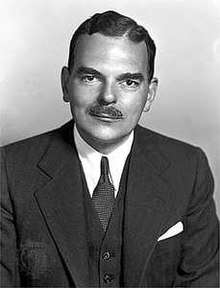 |
Governor of New York (1943–54) |
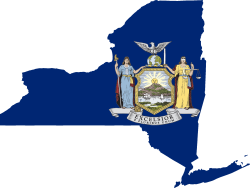 New York |
(Campaign) | |
| Douglas MacArthur |  |
Army Chief of Staff (1930–35) |
 New York |
(Campaign) | |
| Harold Stassen | 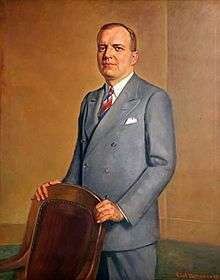 |
Former Governor of Minnesota (1939–43) |
 Minnesota |
(Campaign) | |
| Wendell Willkie | 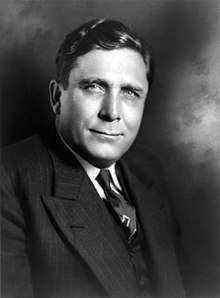 |
Businessman and 1940 presidential nominee |
 New York |
(Campaign) | |
Bypassing primaries
The following candidates did not actively campaign for any state's presidential primary (other than their own), but may have had their name placed on the ballot by supporters or may have sought to influence to selection of un-elected delegates or sought the support of uncommitted delegates.
| Candidate | Most recent position | Home state | Campaign | |
|---|---|---|---|---|
| John W. Bricker | .jpg) |
Governor of Ohio (1939–45) |
 Ohio |
|
| Earl Warren | .jpg) |
Governor of California (1943–53) |
 California |
|
Favorite sons
The following candidates ran only in their home state's primary or caucus for the purpose of controlling its delegate slate at the convention and did not appear to be considered national candidates by the media.
- Joseph H. Bottum of South Dakota
- Representative Charles A. Christopherson of South Dakota
- Senator Chapman Revercomb of West Virginia
- Governor Earl Warren of California
Declined to run
- Senator Robert Taft of Ohio
- Senator Arthur Vandenburg of Michigan
Polling
National polling
| Source | Publication | ||||||
|---|---|---|---|---|---|---|---|
| Gallup[2] | May 1943 | 8% | 38% | 17% | 7% | 1% | 28% |
| Gallup[2] | June 1943 | 10% | 37% | 15% | 7% | 1% | 28% |
| Gallup[2] | Sep. 1943 | 8% | 32% | 19% | 6% | 1% | 28% |
| Gallup[2] | Dec. 1943 | 10% | 36% | 15% | 6% | 1% | 25% |
| Gallup[2] | Jan. 1944 | 8% | 42% | 18% | 6% | – | 23% |
| Gallup[2] | Apr. 1944 | 9% | 55% | 20% | 7% | – | 7% |
| Gallup[2] | May 1944 | 9% | 65% | – | 5% | 2% | – |
| Gallup[2] | June 1944 | 12% | 58% | – | 6% | – | – |
Statewide contest by winner
The Wisconsin primary proved to be the key contest, as Dewey won by a surprisingly wide margin; he took 14 delegates to four for Harold Stassen, while MacArthur won the three remaining delegates. Willkie was shut out in the Wisconsin primary; he did not win a single delegate. His unexpectedly poor showing in Wisconsin forced him to withdraw as a candidate for the nomination.
| Date | Primary | Douglas MacArthur | Earl Warren | John W. Bricker | Thomas Dewey | W. Chapman Revercomb | Harold Stassen | Riley A. Bender | Charles A. Christopherson | Wendell Willkie | Joseph H. Bottum | Unpledged |
|---|---|---|---|---|---|---|---|---|---|---|---|---|
| March 14 | New Hampshire | 0% | 0% | 0% | 0% | 0% | 0% | 0% | 0% | 0% | 0% | 100% |
| April 5 | Wisconsin | 73% | 0% | 0% | 15% | 0% | 0% | 0% | 0% | 5% | 0% | 0% |
| April 11 | Illinois | 92% | 0% | 0% | 2% | 0% | 0% | 6% | 0% | 0% | 0% | 0% |
| April 11 | Nebraska | 0% | 0% | 0% | 23% | 0% | 66% | 0% | 0% | 10% | 0% | 0% |
| April 23 | Pennsylvania | 5% | 0% | 2% | 84% | 0% | 1% | 0% | 0% | 2% | 0% | 0% |
| April 25 | Massachusetts | 0% | 0% | 0% | 0% | 0% | 0% | 0% | 0% | 0% | 0% | 100% |
| May 1 | Maryland | 0% | 0% | 0% | 0% | 0% | 0% | 0% | 0% | 21% | 0% | 79% |
| May 2 | South Dakota | 0% | 0% | 0% | 0% | 0% | 0% | 0% | 60% | 0% | 40% | 0% |
| May 2 | Ohio | 0% | 0% | 100% | 0% | 0% | 0% | 0% | 0% | 0% | 0% | 0% |
| May 2 | West Virginia | 0% | 0% | 0% | 0% | 100% | 0% | 0% | 0% | 0% | 0% | 0% |
| May 16 | California | 0% | 100% | 0% | 0% | 0% | 0% | 0% | 0% | 0% | 0% | 0% |
| May 16 | New Jersey | 1% | 0% | 1% | 86% | 0% | 1% | 0% | 0% | 3% | 0% | 0% |
| May 19 | Oregon | 0% | 0% | 5% | 78% | 0% | 9% | 0% | 0% | 5% | 0% | 0% |
The convention
| Presidential ballot | 1 | Vice-presidential ballot | 1 |
|---|---|---|---|
| New York Governor Thomas E. Dewey | 1,056 | Ohio Governor John W. Bricker | 1,057 |
| General Douglas MacArthur | 1 | Abstaining | 2 |
References
- "Guide to U.S. Elections - Google Books". Books.google.com. 2016-02-19. Retrieved 2016-02-19.
- "US President - R Primaries". OurCampaigns.com. 15 Nov 2004. Retrieved 8 Apr 2020.
